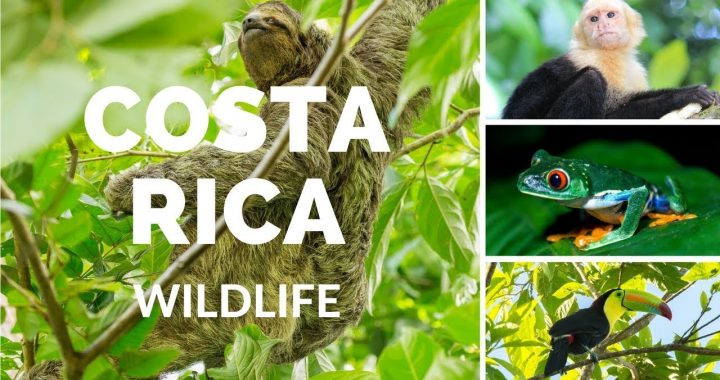When you are looking for real estate in Southern Costa Rica, you will, of course, be scanning through a ton of listings for properties in Quepos, Dominical, Uvita, Ojochal, and beyond.
As you read through the listings for condos, homes, hotels, undeveloped land or whatever else, you are going to read some version of the following sentence over and over: “There is abundant wildlife including monkeys, toucans, parrots….”
While that statement is true, it isn’t all that useful in choosing a property. Why? Because pretty much every property in Southern Costa Rica has abundant wildlife. You’d have to stay cloistered away like a monk to not see wildlife all around you.
To own a property in Southern Costa Rica is to become a wildlife photographer. Almost everyone down here who has a Facebook or Instagram account is sooner or later posting pictures of sloths, interesting bugs, gorgeous plants, iridescent birds, and more.
This isn’t by accident, nor is it the “norm.” There was a time when deforestation was happening just like it has in so many other countries in Central and South America. Loss of habitat threatened whole species and the amazingly biodiverse world of the tropical forests was thinning out. In addition, hunters both local and foreign reduced some animal populations dangerously either to put food on the table or a stuffed trophy on the wall.
With the encouragement of some environmentally conscious visitors, Costa Ricans realized years ago that one of their most valuable resources is dynamic forests filled with wildlife. They passed laws to protect those forests and that wildlife. They made it illegal to hunt anything ever. The made it illegal to cut down big trees without a permit and made it difficult to get that permit. They encouraged people to set aside conservation areas and paid them to do it. They allow foreigners to get residency by putting a certain amount of money into reforestation projects. They recently passed a law allowing insurance payments to farmers who have lost livestock to large cats, so the farmers won’t hunt and kill the cats.
Old timers remark over and over about the difference that has made. My wife and I have only been here 6.5 years and we ourselves see changes. On our property we’ve seen wild pigs, sloths, agoutis, coatimundis, deer, hawks, parrots, toucans, dart frogs, toads, a few snakes (they tend to “run” and hide) and much, much more. We even caught a puma on camera stealthily creeping past our home at 3:00 in the morning. At the micro level, I take macro pictures of crazy cool insects.
So the natural balance of life is slowly returning. It’s a long process that requires both time and protection. There are ways that you can give it a boost:
First, look more closely. There are the obvious birds and animals, but our morning walks have now become chances to see things we never did before. We look for tent bats. We can identify some dart frogs by sound. We’re watch out for the golden orb spiders so we don’t wreck their huge golden webs.
Second, learn some names and stories. Nothing makes the natural world come alive like knowing what you’re looking at and some of its natural history. Scientists are trying to invent a way to duplicate the strength of those golden orb spider webs. Leafcutter ants are ancient farmers and have an unbelievably complicated social structure. Little mimosa ferns can “learn” and “remember.” Every sloth is a microbiome. And so on.
Third, learn the connections. In a healthy forest environment, your first impression is how cool everything works together in lasting harmony. However, as you get to know it better, you begin to see that everything in the forest is battling everything else for light, food, and reproductive rights. Alliances are created for mutual protection or sustenance. Trees work together. Army ants have dozens of insects and birds following them around. The more you learn, the more amazing it all is.
Finally, do your part. Plant native trees that attract birds and monkeys. Leave sections of your property for “natural landscaping.” Avoid toxic chemicals. Get serious about reducing your use of throwaway plastic bags. Volunteer for organizations like Community Carbon Trees (http://www.communitycarbontrees.org/) or donate to their projects.
The bottom line is, one of the most appealing things about Costa Rica is its wildlife. That’s intentional, so if you are too, this will continue to be a country that leads the world in environmental awareness and reforestation.






